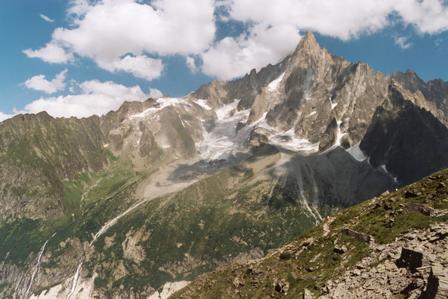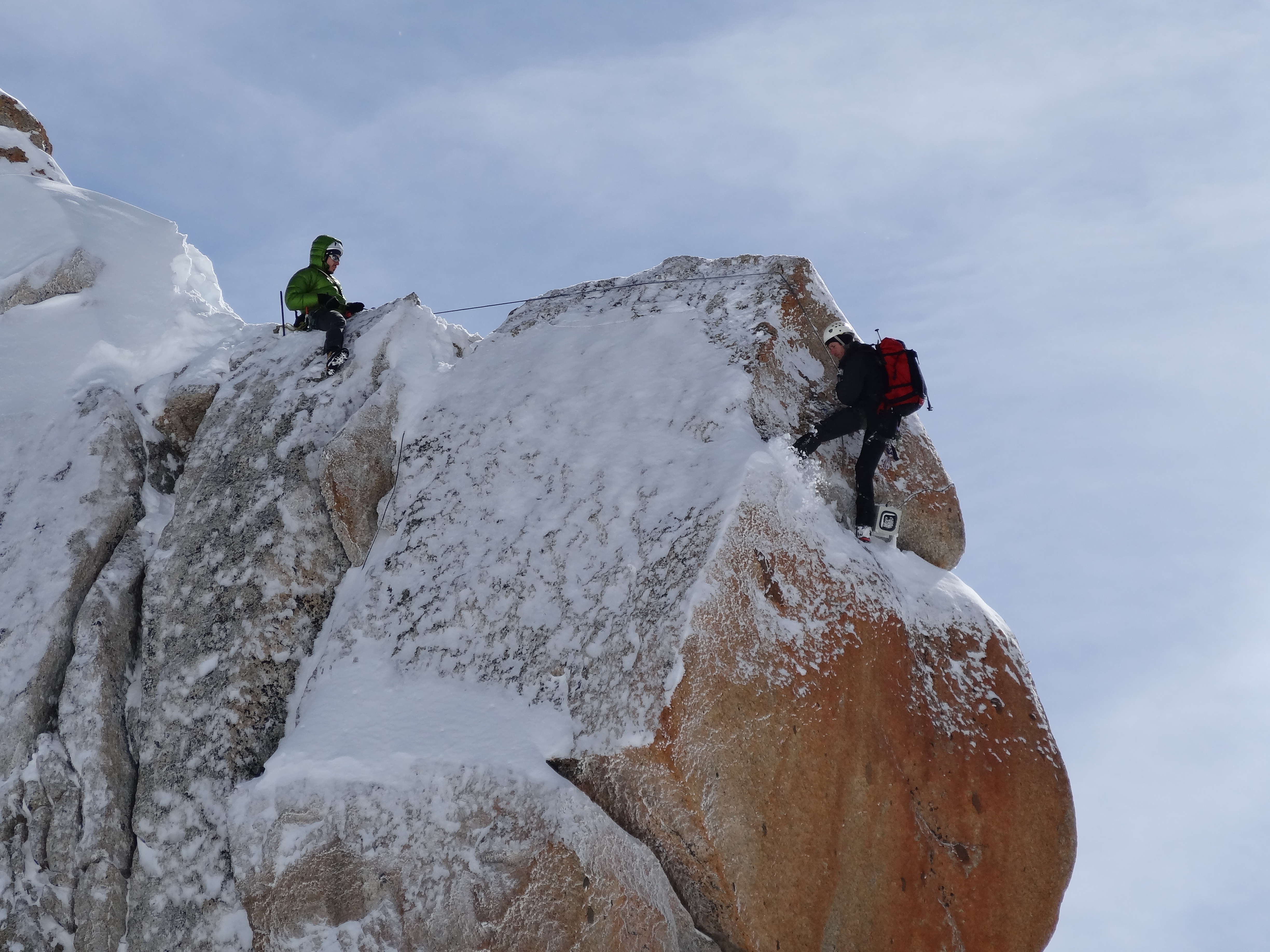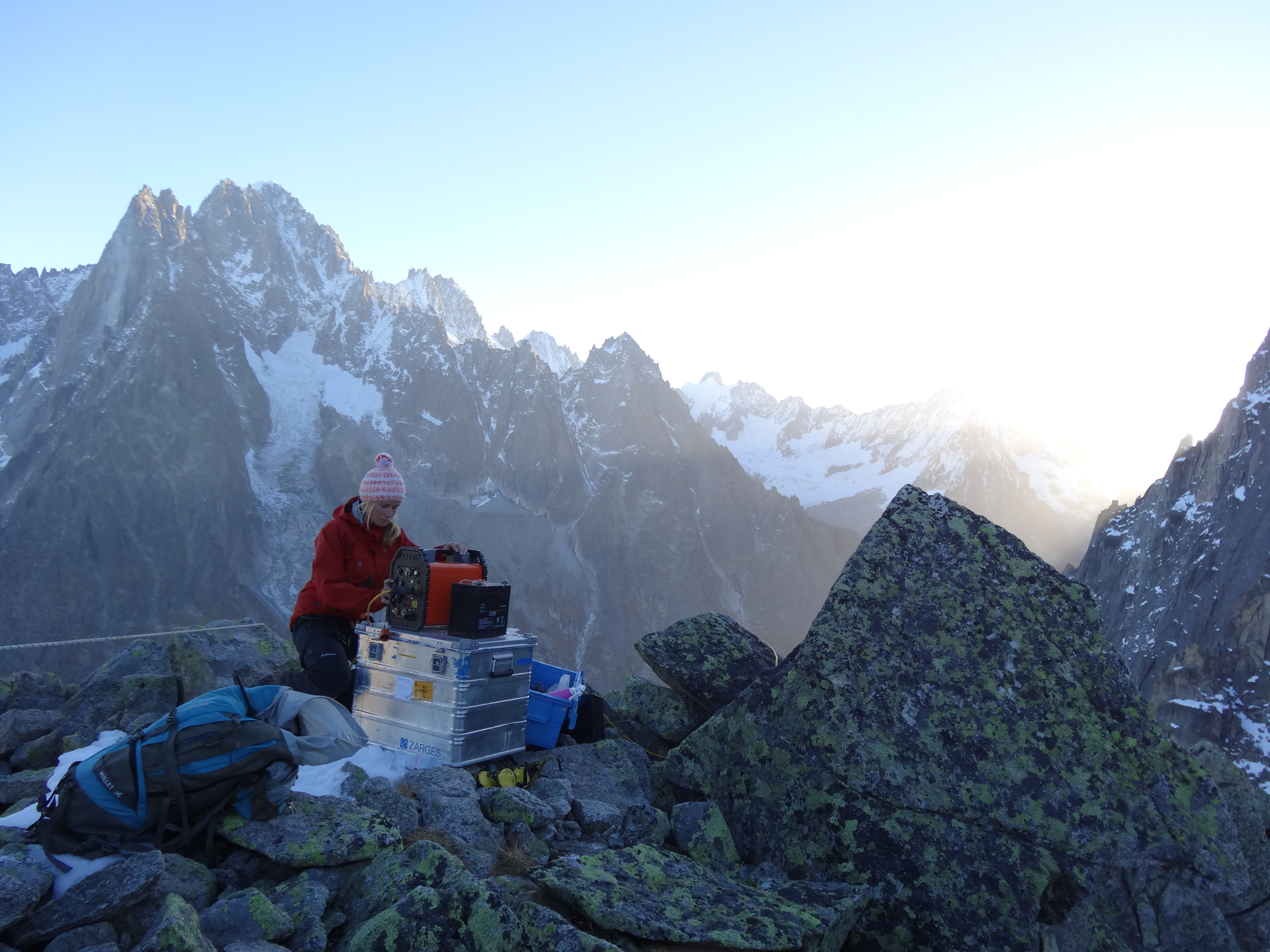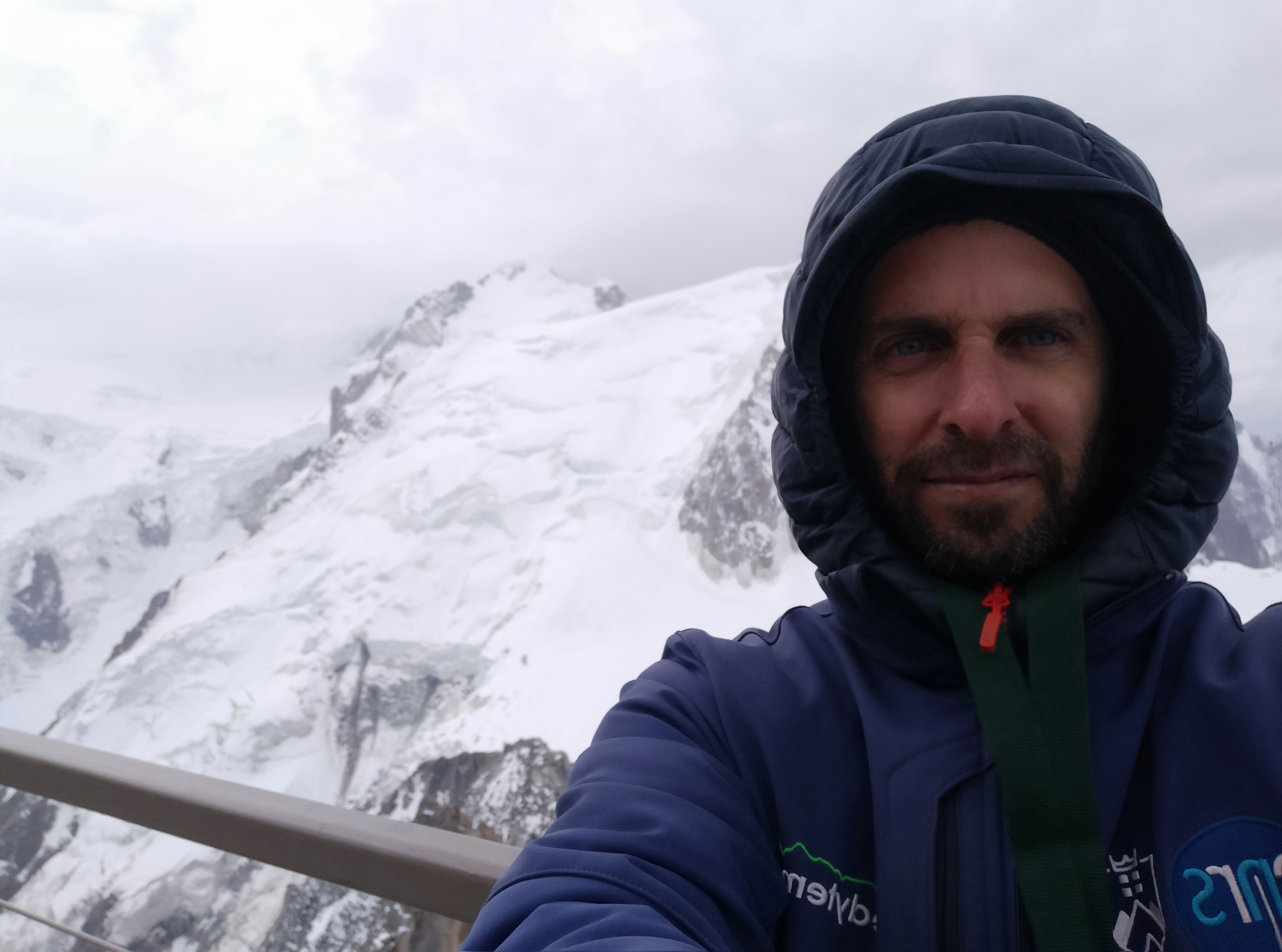On the mighty peaks of the world, in conditions of extreme cold and little oxygen, an Israeli scientist investigates the connection between the thawing of frozen soils in the high mountain areas due to the climate crisis and the occurrence of dangerous rock avalanches
Dr. Matan Ben Asher, Angle - Science and Environment News Agency

On June 30, 2005 at 03:00 in the morning, a tremendous noise startled the stillness of the night in the ski town of Chamonix at the foot of the famous Mont-Blanc range in the French Alps. A sequence of large rockslides on Mount Drus ended with a huge landslide, which toppled the "Bonatti pillar" - a 1000 meter long granite rock pillar that challenged mountaineers for decades. About 300 thousand square meters of rock collapsed in an instant. The collapse of the iconic rock drew the attention of many to a problem that began to show its signs, and which I am currently researching - the effect of the climate crisis on the stability of high mountain ranges.
To understand the connection between the rise in global temperatures and rockslides, you need to know one of the hot (or rather cold) names in the field: The permafrost (Permafrost, or in Hebrew "frozen until"). This concept consists of the words permanent (permanent) and frost (frozen), and describes soils that are frozen throughout the year. In many of the permafrost soils, the temperature has not risen beyond the zero degree Celsius line for thousands or even tens of thousands of years. In these soils, water can only exist as solid ice and not as a liquid, which affects various biological, chemical and mechanical processes for which water is a catalyst.

The permafrost has been studied for decades, including in areas near the North Pole, such as Siberia, Alaska, Greenland and the Svalbard group of islands in northern Norway. In these areas there is a real fear that the warming of permafrost soils rich in organic matter will cause them to thaw - and the release of carbon dioxide and methane from an organic source, created as a result of the decomposition by bacteria of plant and animal remains that have been buried in the soil for tens of thousands of years. This will create a positive feedback loop - that is, the release of carbon dioxide and methane from the soils will worsen the global temperature rise, which in turn will worsen the thawing of the soils, and God forbid.
Besides the greenhouse gases, the melting of the permafrost in the Arctic also releases other things that have been frozen for generations in the ice. The remains of hairy mammoths and various other prehistoric mammals that have been extinct since the last ice age emerge intact following the thaw andMake headlines. Recently, there has also been a real concern about their release into the environment of Disease-causing bacteria and viruses as a result of the thawing of animal remains.
A phenomenon that has hardly been studied
Apart from the Arctic region, permafrost also exists in high mountains, where it is formed as a result of the low temperatures that prevail at high altitudes. Unlike the arctic permafrost soils, the permafrost in the high mountains is not soil - but frozen rock (or more precisely, rock that the water inside is actually ice). While arctic permafrost research has been a very active field for many years, the phenomenon of permafrost and its thawing in the world's highest mountains was almost unexplored until the late 90s. The permafrost in the high mountains is also much less accessible than the arctic permafrost, and to study it it is necessary to work in difficult conditions.
Rockslides, like the one that toppled the Bonati Pillar, occur when the load on a block of rock exceeds the force of friction with the layers beneath it, which holds it in place. This happens many times due to a disturbance in the stability of the slope, for example due to earthquakes or heavy rain storms. One of the main concerns when it comes to thawing the permafrost in the mountains is that this damages the stability of the rocks, which could lead to a landslide of soil and rocks and a fatal disaster.
As water penetrates deep
I myself came to research this fascinating field because I can combine my scientific background in geology and geomorphology with what pushed me to study the field in the first place: the desire to work to preserve nature and the environment, and my great love for mountains. All this is joined by my main hobby: climbing mountains and cliffs.
My research is carried out as part of a post-doctorate at the National Center for Scientific Research in France (CNRS), in a research group at the EDYTEM Institute for the Study of Environment and Dynamics in the Mountains at the University of Savoie Mont Blanc (Savoie Mont Blanc) in France. Our research is partly based on the fact that in recent decades there has been an increase in the number of landslides that occur in the Alps and other mountain ranges in the world. In many cases there is a connection between the occurrence of landslides and periods of extreme heat waves. Furthermore, temperature measurements show that the rate of warming in the Alps region is high compared to the rest of the world, and many visual examples of this can be found in the massive retreat of glaciers there.

The thawing of permafrost in the high mountains causes liquid water to flow through cracks in the rocks where it was previously frozen - places where there was only ice for so many years. In many cases, immediately after a rockfall, ice and water flowing on the surface of the exposed mountain were observed. The obvious hypothesis is that the warming in the Alps (which is progressing at a rate of 0.3 degrees Celsius per century - when the global average is 0.2 degrees) causes the thawing of permafrost - and this causes instability in the steep slopes, which is related to the thawing water. Very little is known about the mechanism that links the warming and the presence of the liquid water to the collapse of slopes, and we are trying to study this connection.
Water can weaken rock in a number of ways. First, they act as a cushioning material, allowing large blocks of rock to move. In addition, liquid water can cause high hydrostatic pressure in deep rock cracks due to its weight (everyone who has ever dived deep felt this pressure well in their ears) - this is in contrast to ice, which usually sticks to the sides of the rock and does not create a load on the bottom. Water can also create pressure by processes related to its refreezing in the winter, which leads to its expansion in the cracks in the rocks (have you ever had a glass drinking bottle explode in the freezer?). The liquid water is also an effective chemical solvent, and is able to enlarge cracks in the rock by melting and weakening the crack tip.
Painstaking research against the view of the Alps
As mentioned, it is not easy to study the permafrost in the high mountains, and we work in a very cold and low-oxygen environment. If this is not enough, the permafrost in the mountains is usually not on the surface, but at a depth of several meters below the surface of the rock - in the part where the sun's radiation is unable to penetrate it and warm it in the summer. Most of the time, the surface is also covered with snow for at least part of the year - and if it is a cliff too steep for snow to pile up on it, we face another difficulty: the need to climb a steep and cold cliff. Therefore, the tool kit of a permafrost researcher going into the field will often include mountaineering equipment and a drill. But among all the difficulties, one can count on one thing: the view that surrounds us while working is always wonderful.
We use different methods to measure or estimate the temperature and humidity inside the rock, whether it's directly, by sensors we insert into the rock, or indirectly: for example by measuring the electrical resistance in the rock, or through remote sensing by satellites and drones.

Another key research tool is the use of computer models, which are based on mathematical equations that describe physical processes: such as the thawing and freezing of water, the heating and cooling of rock, the flow of water and heat in rock cracks, and more. The models often rely on environmental variables measured in the field (in the cold, in the mountains, with the backpack and the drill), and they allow us to examine the natural processes in the warm and pleasant environment of the office at the university.
The scientific challenges facing permafrost researchers in the mountains are many, but the change is already happening before our eyes: the increase in awareness of the subject and the amount of research, together with technological advances in the field, push us to learn more and more all the time. Whether it is in the Alps, the Himalayas, the Andes or the Rocky Mountains, a deep understanding of the relationship between the warming and melting of the rock and the stability of the mountain slopes will help in properly preparing for natural disasters, and can allow us to reduce the risk to infrastructure, and above all - to human life.
Dr. Matan Ben Asher is a geomorphologist researching permafrost in the high mountains at the EDYTEM Lab, Université Savoie Mont Blanc, CNRS.
